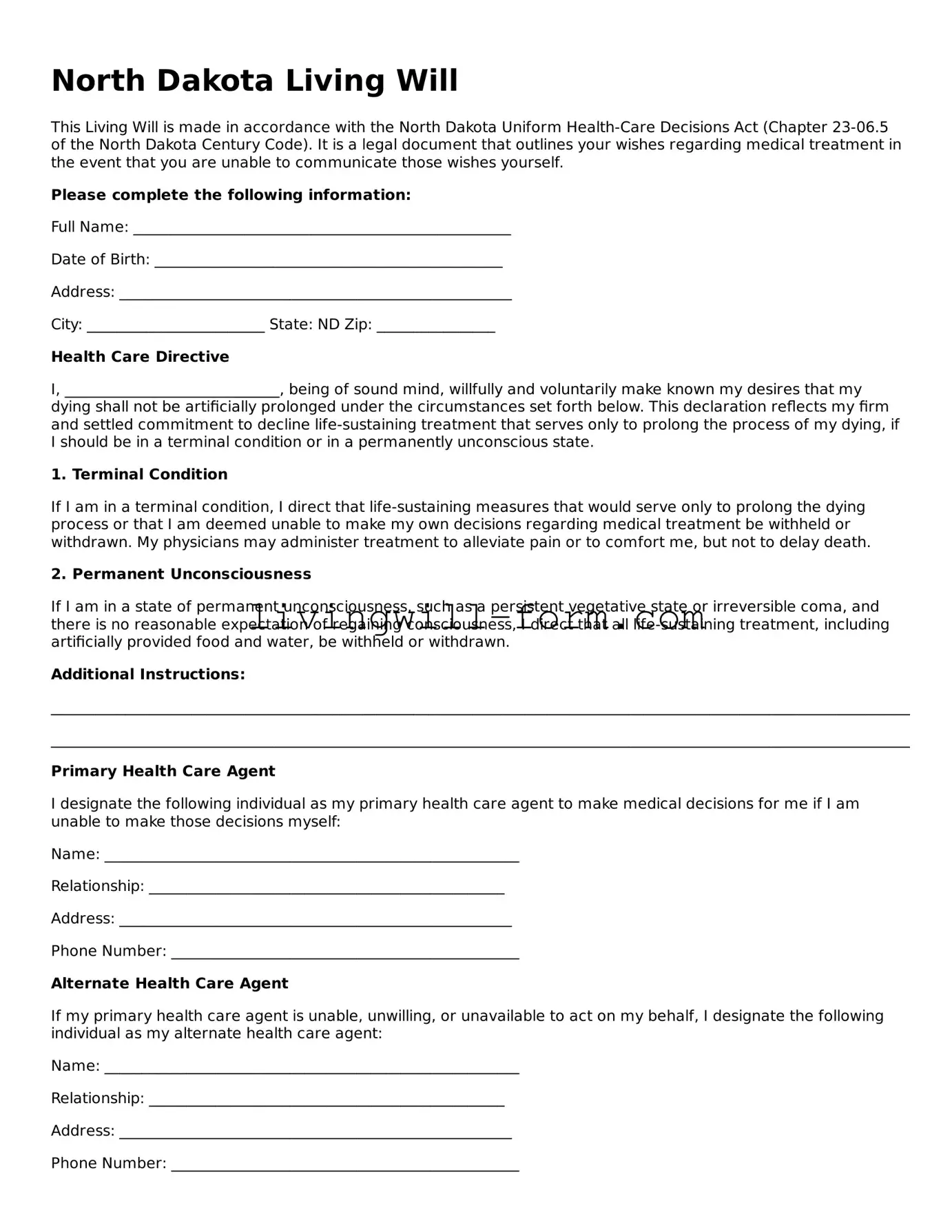North Dakota Living Will
This Living Will is made in accordance with the North Dakota Uniform Health-Care Decisions Act (Chapter 23-06.5 of the North Dakota Century Code). It is a legal document that outlines your wishes regarding medical treatment in the event that you are unable to communicate those wishes yourself.
Please complete the following information:
Full Name: ___________________________________________________
Date of Birth: _______________________________________________
Address: _____________________________________________________
City: ________________________ State: ND Zip: ________________
Health Care Directive
I, _____________________________, being of sound mind, willfully and voluntarily make known my desires that my dying shall not be artificially prolonged under the circumstances set forth below. This declaration reflects my firm and settled commitment to decline life-sustaining treatment that serves only to prolong the process of my dying, if I should be in a terminal condition or in a permanently unconscious state.
1. Terminal Condition
If I am in a terminal condition, I direct that life-sustaining measures that would serve only to prolong the dying process or that I am deemed unable to make my own decisions regarding medical treatment be withheld or withdrawn. My physicians may administer treatment to alleviate pain or to comfort me, but not to delay death.
2. Permanent Unconsciousness
If I am in a state of permanent unconsciousness, such as a persistent vegetative state or irreversible coma, and there is no reasonable expectation of regaining consciousness, I direct that all life-sustaining treatment, including artificially provided food and water, be withheld or withdrawn.
Additional Instructions:
____________________________________________________________________________________________________________________
____________________________________________________________________________________________________________________
Primary Health Care Agent
I designate the following individual as my primary health care agent to make medical decisions for me if I am unable to make those decisions myself:
Name: ________________________________________________________
Relationship: ________________________________________________
Address: _____________________________________________________
Phone Number: _______________________________________________
Alternate Health Care Agent
If my primary health care agent is unable, unwilling, or unavailable to act on my behalf, I designate the following individual as my alternate health care agent:
Name: ________________________________________________________
Relationship: ________________________________________________
Address: _____________________________________________________
Phone Number: _______________________________________________
Signature
By signing below, I affirm that I am of sound mind and I understand the contents of this document. I am aware that this document is legally binding across North Dakota.
Signature: ______________________________________ Date: ______________
Witness (1) Signature: _____________________________ Date: ______________
Witness (2) Signature: _____________________________ Date: ______________
Witness Acknowledgement
The undersigned, being first duly sworn, do hereby declare to the undersigned authority that the principal appears to be of sound mind and under no duress, fraud, or undue influence, and the witnesses are not related to the principal by blood or marriage, and, to the best of the witnesses' knowledge, are not entitled to any part of the estate of the principal upon the death of the principal under a will now existing or by operation of law.
